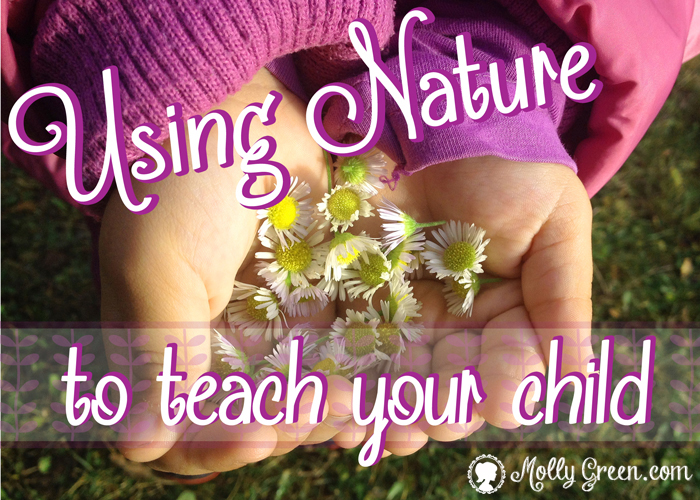By Mimi Mason
Our homeschool journey began when Aria was only 2-years-old. It did not begin intentionally, but rather as a series of fun activities that led to learning. We made color collages from pictures cut out of magazines, made an alphabet matching game from construction paper princess dresses, and made spider webs that rendered my kitchen unusable for a day. I’m not going to lie; it was nice to have an excuse to ignore the dishes! While all these things were fun and exciting, nothing seemed to enthrall her like nature.
After reading up on the educational theories of Maria Montessori and Rudolph Steiner, I began to incorporate some of the concepts of hands-on, nature-based schooling into our days. The response in Aria was remarkable, and almost five years later she is still deeply devoted to the study of the natural world around her.
No need to lump nature exclusively into your science lessons, it can be used in your reading lessons, math, and practical lessons as well. In Aria’s earliest years of our preschool-at-home, we took many nature hikes collecting pine cones, rocks, leaves, and twigs—anything really that struck her interest. These bits became science lessons as we studied the forest ecosystem and all the flora and fauna therein. They became math lessons as we sorted and grouped, and used the bits as counters when learning numbers. They became reading lessons as we sounded out the beginning and ending letter sounds of each item.
Twigs were often arranged into the shapes of letters and numbers for fun, while we pressed the pebbles into shapes of different colors of homemade play dough. We have used sea shells to create matching games and fronds of pampas grass for little brooms. One day I set up a rock washing station—just a bucket of rocks, a bowl of clean water, and a few cleaning tools. To my surprise, Aria spent the better part of an afternoon delving into the textures and weights of different rocks and experimenting with sinking and floating.
Nature makes so many wonderful seeds, flowers, and pebbles that function well as counters and syllable markers for math and reading practice as well. Now that she’s older, Aria enjoys activities such as seed sorting and identification, and learning about medicinal plants and herbs. She loves to study the wild life that passes through our yard, and makes sure our bird feeder is always fully stocked.
Acorns are now some of our favorite counters during math, and as she learns about different trees she learns to recognize their names in print. Autumn leaf prints have given us a peek into the inner workings of the capillary system, while mushroom spore prints teach us about nature’s special delivery system. We learn about the miracle of flight from the original fliers themselves, comparing the flight patterns of sparrows to those of geese and hawks. When we read the Trumpet of the Swan, we measured a swan’s wing span and compared it to Aria’s height. We made spelling lists including swan-related words, and studied a map following the migration path a swan might follow. In all these ways, nature inspired Aria to learn more, giving her a world-wide approach to her learning.
Nature-inspired homeschooling works especially well with a literature-based curriculum, but can easily adapt to fit even the most classical of educational models. Delving into nature feeds a child’s innate curiosity about the world, and gives academic subjects a freshness that inspires a child to explore and learn about more than just a subject. In our experience, one subject transitions to the next, and the next in a natural progression leading a child to a whole-world discovery, rather than a segmented learning process. The world does not function in a vacuum, and neither does our homeschool. This learning process has been invaluable to our family, and has taught each of us new lessons. We have learned to respect the world around us, and to appreciate all the intricate and beautiful ways in which life blossoms.
Mimi Mason is a homemaker, homeschooler, and micro homesteader. She chronicles her family’s experiences with sustainable living on her blog, The Simple Survivalist. When she’s not elbow-deep in garden soil and bread dough, she can be found hidden behind the pages of a good book.





